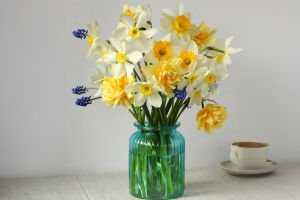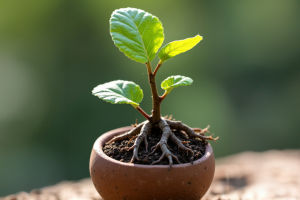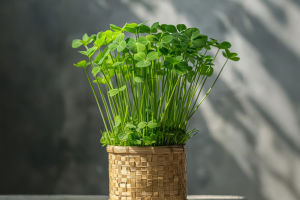I used to remove every plant I touched.
Not dramatically. Not all at once.
Just slowly—through neglect, overwatering, or forgetting to open the blinds.
So when I decided to bring green into my apartment, I didn't aim for a jungle.
I wanted one thing:
a living plant that didn't feel like a responsibility.
Turns out, that's possible.
With the right plants, an indoor garden isn't about perfection.
It's about presence.
And after two years of trial, error, and quiet wins, I've built a small indoor oasis—no expertise needed.
Just a few smart choices.
Here's how to create your own green haven—without stress or constant care.
Pick Plants That Fit Your Life—Not a Magazine
Forget what you see online.
The best indoor plants aren't the ones that look perfect.
They're the ones that survive your routine.
Ask yourself:
• How much light does your space really get?
• Do you forget to water for weeks?
• Do you travel often?
Then choose accordingly.
Dr. Elena Torres, a horticultural therapist at the University of Melbourne, says: "People fail with houseplants not because they don't care—but because they choose plants that don't match their environment. Success starts with honesty, not aesthetics."
So skip the fussy ones.
Start with these five resilient, air-purifying, life-enhancing plants.
1. Snake Plant (Sansevieria)
This is the ultimate "I forgot you existed" plant.
Why it works:
• Thrives in low to medium light
• Needs water only once every 3–4 weeks
• Tolerates dry air and irregular care
• Removes toxins like formaldehyde from the air (NASA Clean Air Study)
I have one in my bedroom. It's survived vacations, winter heating, and months of neglect.
It's even grown taller.
Place it in a corner or near a window with indirect light.
No special soil. No misting.
Just let it do its quiet thing.
2. ZZ Plant (Zamioculcas zamiifolia)
If the snake plant is tough, the ZZ plant is indestructible.
Key benefits:
• Grows in very low light (even fluorescent office lighting)
• Stores water in its roots—overwatering is the only real threat
• Has glossy, upright leaves that add subtle elegance
A client of Dr. Torres' kept one in a windowless bathroom for 18 months with only occasional bathroom light—and it thrived.
Water it every 4–6 weeks.
Wipe the leaves occasionally to remove dust.
Otherwise, leave it alone.
It prefers it that way.
3. Pothos (Epipremnum aureum)
Want movement and softness in your space?
Pothos is your plant.
Why it's perfect for beginners:
• Grows quickly, with long trailing vines—great for shelves or hanging pots
• Adapts to low or bright, indirect light
• Tells you when it needs water (leaves droop slightly)
• Can be grown in water or soil
I have one on my bookshelf. It spills over the edge like a green waterfall.
Every few months, I cut a few stems and place them in water—new roots appear in 2–3 weeks.
Free plants.
4. Spider Plant (Chlorophytum comosum)
Friendly, fast-growing, and subtly charming.
Best features:
• Produces "pups"—small baby plants on long stems—that you can propagate
• Loves bright, indirect light but tolerates lower levels
• Water once a week—just let the top inch of soil dry out between
It's also one of the best air purifiers for removing indoor pollutants.
Hang it near a window or place it on a stand.
Within months, it will start making tiny plantlets—like nature's way of saying, "We're doing great."
5. Cast Iron Plant (Aspidistra elatior)
Exactly what it sounds like: built to last.
Why it's ideal:
• Survives low light, temperature changes, and irregular watering
• Has wide, dark green leaves that look elegant year-round
• Rarely gets pests
It's called the "cast iron" plant for a reason.
One study in Urban Horticulture Journal found it remained healthy in homes with minimal care for over two years.
Perfect for entryways, corners, or rooms you don't use often.
Create Your Mini Oasis in 3 Simple Steps
You don't need a greenhouse.
Just a little intention.
1. Start with one or two plants.
Pick based on your light and habits.
Snake plant + pothos = unbeatable combo.
2. Use pots with drainage.
Prevent root rot by choosing containers with holes and a tray underneath.
Add a layer of small stones at the bottom for better flow.
3. Water less than you think.
Most indoor plants die from overwatering.
Stick your finger in the soil: if the top inch is dry, it's time.
And remember:
Plants don't need to be perfect.
Brown tips? Normal.
Slow growth? Fine.
A little dust? Wipe it off when you remember.
So, what if your home had just one living thing that wasn't you?
Not to impress anyone.
Not to "be healthy."
But to remind you that life grows quietly—even in small spaces.
Try one plant.
One pot.
One moment of care.
Because sometimes, healing isn't loud.
It's a leaf unfurling on a Tuesday morning—
while you weren't even looking.


